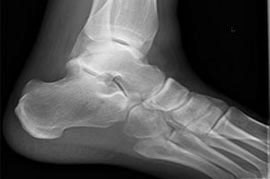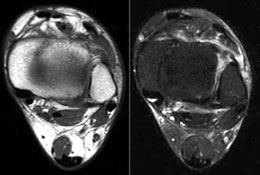
 by Steven D. Johnson
by Steven D. Johnson
Racine, Wisconsin
(Page 2 of 3)
Previous Page
1
2
3
Next Page
Ankles, Seat Belts & Table Saws – A Market Trajectory
The blogs are afire and the email inboxes are overflowing. It seems everyone is
jabbering about new table saw safety regulations to potentially be imposed by
government. I've not blogged, tweeted, or emailed on this subject for one very
simple fact… new safety technologies are inevitable. Wailing, gnashing of teeth,
complaining, cheering, or championing, it makes no difference. It is a fait accompli.
I'm old enough to remember the uproar over automobile seat belt regulations,
and vividly remember the people who made cottage businesses of turning off the
warning bells and disconnecting the seat belt safety interlocks. I remember a few
Luddites that bought a belt-less car the last year they were available and swore
they would keep it running forever. Today the overwhelming majority of us enter
our vehicles and by second nature reach for the belt, wrap, and click with one fluid
motion. We have subconsciously incorporated it into our daily lives. Since seat
belts, additional incredible safety advances have been made with airbags, strategic
crush (impact absorption) zones, rollover protection and now proximity detection
systems and even computers that sense if the driver is getting sleepy. Inexorably,
progress marches on.
In the not too distant future, safety measures incorporated into power tools will
be as ubiquitous as the seat belt. The primary reason is money… money to lose or
money to make.
Lawsuits cost money. Win, lose, or settle, they cost a lot of money. And if there is
a way that someone can get injured, there will be a way to sue someone for that
injury.

|
|
Figure 1 - Ankle X-ray
|
It is natural to include in any discussion about table saw safety and accidents the
associated health care costs, which provides segue into a parallel and instructional
dimension. Time was, if you twisted
your ankle on a slippery sidewalk, you
might take a trek to your family doctor;
he would observe your walk (or limp),
feel the tendons and muscles, have you
move your foot or move it for you, and
gauge the pain attendant to each
movement. After his or her
examination, the doctor might proclaim
the joint sprained, use an elastic
bandage to provide compression and
Figure 1 - Ankle X-ray
additional support, and send you home
with the old "rice" prescription (rest, ice, compression, and elevation). The doctor
would instruct, "Call in a couple of weeks if it does not get better."
That few-minute, few-dollar diagnosis sufficed for hundreds of thousands of people
and decades of time. But somewhere along the trajectory of history, a couple of
interrelated things occurred.

|
|
Figure 2 - Ultrasound image
|
Improved diagnostic tools became widely available… first X-ray and later
Ultrasound and Magnetic Resonance Imaging
(MRI) machines. Contemporaneously, out of
the hundreds of thousands of sprained ankles,
someone went home with the normal doctor's
diagnosis and directions, and the ankle got
worse instead of better. Ultimately the patient
developed a permanent, irreversible problem.
Perhaps it was an undetected break, a torn
ligament, or a pulled hamstring, but the injury
did not heal properly, and that person's
temporary limp and pain became a permanent
Figure 3 - Ultrasound image
way of life. An attorney reasoned that this
missed diagnosis was the responsibility of the
doctor and cited the availability of better
diagnostic tools as proof of malpractice. Legal
costs accrued and ultimately a monetary
award resulted.

|
Figure 3 - MRI image…
and the technology continues to advance
|
Other attorneys saw the potential, and the
growth trajectory for two interrelated medical
industries was set… malpractice insurance and
medical litigation.
As a conjunctive to these new industries,
continues to advance…
expensive diagnostic machinery became ubiquitous because the cost justification
could now include defense against potential malpractice lawsuits. The insurance
industry, hoping to mitigate financial settlements, eagerly agreed to reimburse
doctors for the use of these machines. The perfect storm was set in motion.
New technologies make possible ever-more precise analyses and diagnoses, failure
to use all available technologies puts doctors at risk of being accused of not using
every available diagnostic tool, and attorneys seek out (and sometimes encourage)
patients to sue.
Today, depending on your age and other factors, a twisted ankle might result in
a day or more at the doctor's office or hospital. You may get X-rays, bone density
Figure 2 - MRI image… and the technology
scans, MRIs, ultrasound exams, blood tests, CT scans, or other diagnostic tests…
it just depends on what the insurance company is willing to pay for given the
symptoms presented. And in a twist of logic that only Cirque Du Soleil could
interpret, even if the doctor is 99.9999% certain that your ankle is merely sprained,
if the insurance will cover an MRI, you are going to get an MRI. Got to pay for that
machine and keep the lawyers at bay, remember? Some refer to this as "defensive
medicine."
So, here we are, discussing sprained ankles and seat belts, when the subject at hand
(pun intentional) is unintentional injury via table saw. Just like it took the "perfect
storm" of a sprained ankle, a misdiagnosis, a successful lawsuit, the insurance
industry, and enhanced technology to launch new industries and a cost spiral
that now consumes 17% of our gross domestic production, it only took a careless
untrained worker freehand cutting a board (and his hand) on an unguarded table
saw, a lawsuit, an insurance settlement, and technology that can prevent severe
injury to create the perfect storm that will eventually spiral and consume and
forever change our little hobby. You see, the course of events and the trajectory is
simply inalterable.
You may view this trajectory as good or bad, but make no mistake; it is inalterable.
In a normal free market dynamic, a market need is determined (the negation
of unintentional and accidental injuries), an enterprise invents a product that
answers that market need (flesh-sensing and blade-braking technology), injuries
promulgate lawsuits, insurance companies pay settlements then raise the rates
for manufacturers who do not use the available safety technology, and over time,
manufacturers either adopt the new technology(ies) or invent their own. The only
difference with our current situation is that the government may intervene in this
normal free market trajectory, causing what businesspeople refer to as a "market
convulsion." A market convulsion is an event that disrupts the normal progression
of free-market dynamics. A convulsion in a market can speed up or slow down an
inevitable process or it can produce unintended consequences.
While I would argue that the free market usually produces a better aggregate, albeit
sometimes slower, outcome; either way, we will see a continued evolution of safety
modifications and inventions in our woodworking world.
So, what is the future for our coveted table saw? The government may or may
not pass rules. Those rules may or may not be mandatory. Whether the market
is "convulsed" or follows a natural market-driven trajectory, manufacturers will
adapt, invent, or adopt safety technology. They will be forced to change, be it by
regulation or by market forces. Rising insurance rates might make change a sound
financial decision, for example. Perhaps the popularity of the new safety technology
will simply be a competitive edge that other companies must match or try to outdo.
How many automobile advertisements do you see touting safety records and
technologies? Safety is a marketplace differentiator that can be a powerful force.
Get ready for new safety accessories and devices on future table saws, and probably
other tools as well. Prepare to pay more, at least until volume and competition
drives the prices down. And look for a spate of lawsuits promulgated by the
success of one and the availability of mitigating technology. We may also expect
those lawsuits to spread to other power tools. A friend was recently holding a
piece of trim in place and drove an 18 gauge brad through his finger inadvertently
located on the back side of the work piece. Could a proximity-sensing device have
prevented the firing of the nail gun if flesh were in the line of fire?
We may also logically expect that there will be a spike in sales for current table saw
designs. There will be Luddites that will buy before changes, or rules, take effect,
just like there was a spike in car sales the year before seat belts became mandatory.
Some will buy less-safe machines in order to save money.
These buyers may well save money, but they may also impact the marketplace by
providing their own "convulsive action." An early and unanticipated spike in sales
necessarily removes money from the market pool for future sales.
Some manufacturers that are forced to add safety technology to their product
lineup, either by mandate or by competitive market dynamics, may not be able to
weather the dual convulsion of technological change and a reduced market pool
size. Some may go away, through consolidation or liquidation. Some manufacturers
may simply drop table saws from their lineup and concentrate on other machinery.
Regardless how you feel about rules, regulations, government, lawsuits, table saws,
flesh-sensing technology, markets, or marketing tactics, there is one indubitable
fact… safety is the next marketing frontier and product differentiator for a tool that
has otherwise changed little since its invention. We should all have respect for
an individual that recognized a marketplace need and invented a solution to meet
that need. For that reason, for being first, for being an innovator and for changing
the trajectory of an industry, my hat is off and I do a deep and respectful bow to
inventor Stephen Gass and to his product, the SawStop table saw.
Personally, I use a table saw very little because
they scare the heck out of me. In fact, some
twenty-odd years ago I sold my big 220 Volt 3
HP cabinet style table saw, and for fifteen
years, built scores of furniture pieces without
one. Still, there are some operations that are
best done on a table saw, and for that reason, I
now own a contractor's saw. Ninety percent of
the time it is shoved against a wall, out of the
way. When I need it, I use it with liberal
dollops of fear, loathing, and precaution.
The new safety technologies will actually goad me into the purchase of a "real" table
saw. I'm saving my nickels and dimes for a new "safer" saw that will undoubtedly
get much more use. I'm a glass-half-full kind of guy, so while my goal is to save up
$3,000 for that big purchase, the truth is that by the time I accumulate that vast
amount of money, the prices will probably be lower, other manufacturers may
be competing in the "safety" space, and new safety technologies might be even
more exciting. If Apple can make my iPhone keyboard deactivate when it senses
proximity to my face, a tool manufacturer can surely stop a motor when a blade or
bit gets close to my skin instead of when in physical contact.
So, while I almost always prefer the powerful dynamics of a free-market system,
whether the market progresses naturally or is altered by government intervention
makes no difference. Now that the technology exists to preserve all ten of my
precious digits intact, the technology is here to stay and destined for growth
and expansion. Now that the technology exists, I will not buy a table saw until I
can afford to get one with every available safety technology built in. Thank you,
SawStop, for pointing the way to a bright future!
(Page 2 of 3)
Previous Page
1
2
3
Next Page
Return to Wood News front page
